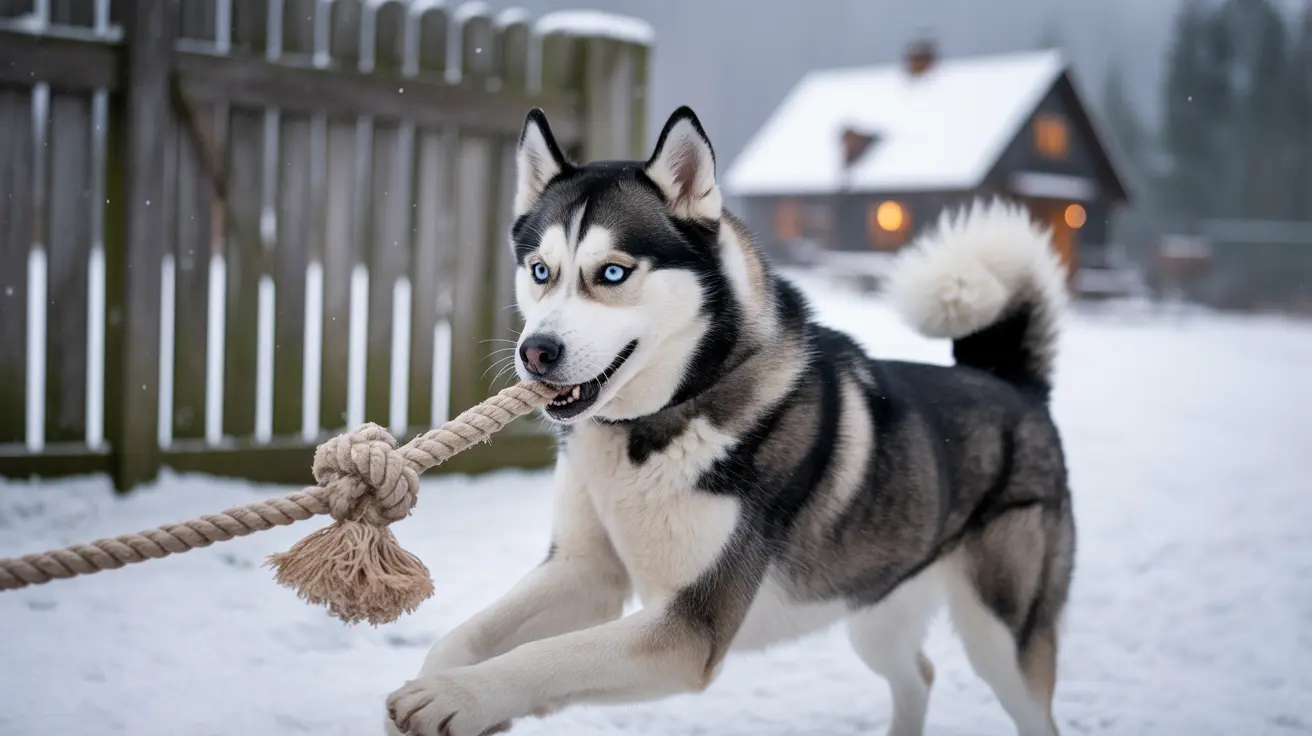Introduction
When it comes to understanding Husky bite force, many pet owners and enthusiasts are curious about just how powerful these magnificent dogs really are. As wolf-like working dogs bred for sledding in harsh Arctic conditions, Siberian Huskies possess a notable bite strength that reflects their heritage and physical capabilities.
In this comprehensive guide, we'll explore the true measure of a Husky's bite force, how it compares to other breeds, and what these numbers mean for potential and current Husky owners.
Measuring Husky Bite Force: The Numbers
The average Siberian Husky has an estimated bite force of approximately 320 PSI (pounds per square inch). However, it's important to note that actual scientific measurements can vary, with some studies suggesting a more moderate range of 150-200 PSI.
This bite force places Huskies in the moderate-to-strong category among domestic dogs, though significantly below the most powerful breeds like the Kangal (750 PSI) or Rottweiler (328 PSI).
Comparing Husky Bite Force to Other Breeds
To put a Husky's bite force in perspective, here's how they stack up against other popular breeds:
- Kangal Dog: 700-750 PSI
- American Mastiff: 552 PSI
- Rottweiler: 328 PSI
- Siberian Husky: 320 PSI
- German Shepherd: 238 PSI
- Labrador Retriever: 230 PSI
Factors Influencing Bite Force
Several key factors contribute to a Husky's bite strength:
- Jaw structure and muscle development
- Age and overall health
- Size and physical condition
- Individual genetics
- Training and socialization
Real-World Applications and Safety
While Huskies possess considerable bite strength, they weren't bred for aggression or guard dog duties. Their bite force primarily evolved to aid in their working role as sled dogs, helping them maintain grip on equipment and navigate icy terrain.
Responsible ownership, including proper training and socialization, is far more important than raw bite force numbers in preventing incidents. Huskies are generally friendly and social dogs when well-trained and properly cared for.
Training and Management
To ensure safe management of your Husky's natural strength:
- Start socialization early
- Provide consistent training
- Maintain regular exercise
- Monitor interactions with children and other pets
- Address any signs of aggression promptly
Frequently Asked Questions
How strong is a Siberian Husky's bite force compared to other dog breeds?
A Siberian Husky's bite force averages around 320 PSI, placing them in the middle range compared to other breeds. While significant, this is less than breeds like the Kangal (750 PSI) or Rottweiler (328 PSI).
What factors influence the bite force of a Husky?
A Husky's bite force is influenced by their jaw structure, muscle development, age, overall health, and physical condition. Genetics and breeding also play significant roles in determining bite strength.
Can a Husky's bite cause serious injury, and how can I prevent bite incidents?
Yes, a Husky's bite can cause serious injury due to their moderate-to-strong bite force. Prevention focuses on proper training, early socialization, and responsible ownership practices, including supervision around children and other animals.
Is the Husky's wolf-like appearance an indicator of dangerous biting behavior?
No, a Husky's wolf-like appearance doesn't indicate dangerous behavior. Despite their appearance, Huskies are typically friendly, social dogs when properly trained and socialized. Their bite force evolved for work, not aggression.
How accurate are bite force measurements for Huskies, and how are they obtained?
Bite force measurements for Huskies are typically estimates based on controlled studies using specialized equipment. Actual measurements can vary, and many published figures are extrapolated from related breeds or anatomical studies rather than direct testing.
Conclusion
Understanding Husky bite force helps owners appreciate their pet's physical capabilities while emphasizing the importance of responsible ownership. While Huskies possess significant jaw strength, their friendly nature and proper training matter more than raw bite force numbers in ensuring a safe and happy relationship with these remarkable dogs.






